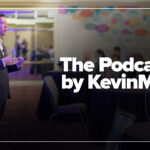My wife, Kathy, had stage 4 end-stage renal disease. She was slowly dying, but never stopped living. Her resilience in managing peritoneal dialysis made travel possible, even with the logistical complexities involved. Ireland had long been on our bucket list, inspired by Kathy and Stephanie’s earlier visit while we lived in Peoria. With careful planning, we booked our flights using points out of Orlando, knowing the drive would minimize Kathy’s walking with her cane.
The journey itself was far from seamless. Compared to the exceptional service of ANA and Qatar, American’s aging aircraft and absent hospitality were a disappointing descent. When we finally landed in Dublin at 5:20 a.m., exhausted after 12 hours in the air, no one was there to assist. Eventually, someone arrived with a wheelchair for Kathy, but I had to endure a painful kilometer-long walk using my cane, an agonizing start to the trip.
Our rental car ordeal was its own adventure. The Hertz agent insisted our reserved mid-size SUV wouldn’t fit our luggage and upsold us to a full-size Audi A6. While the car was comfortable, we quickly discovered that Irish roads could not accommodate luxury sedans. Nevertheless, we set off toward Galway, navigating the toll motorways and taking in the breathtaking scenery of the Connemara Loop.
We visited the famous bridge featured in The Quiet Man, soaking in the cinematic nostalgia before arriving in Galway. In Galway, a sideswipe accident left our rental car damaged and our nerves frayed. We reported it to the Garda (Irish Police) and settled into the House Hotel, grateful for two nights of rest and recovery. Galway had its own moments of levity, including dinner at the Purple Door Café and a boat tour to the Aran Islands, where Kathy picked a beautifully knitted blue cardigan and we marveled at the Cliffs of Moher from sea.
But Kathy’s trip took a physical toll. After an exhausting day, she tripped over her cane at the hotel, landing a black eye that would remain throughout the journey. EMS provided Kathy a cold pack for her head, but she didn’t let it ruin the adventure. We continued our drive to Derry, stopping at Shannon Airport to report the accident and replace the passenger-side mirror. Hertz had no replacement vehicle but assured us the car was fine, a dubious claim that would later prove inaccurate.
In Dingle, we stayed at The Waterfront Hotel, where the owner personally helped park the car closer to the hotel and arranged transportation to John Benny’s Pub. With an Irish SMS card in Kathy’s old phone finally working, we could navigate more smoothly. That night, we celebrated survival with fish and chips, two pints of Guinness for me, and an apple cider for Kathy. Kathy fell again at the steep incline leading to The Boatyard Restaurant, but inside, the staff ensured a fantastic meal. The next day, we took the Slea Head Drive, passing the solemn white cross on the rocky cape. Then, we continued the famous Ring of Kerry, avoiding tour buses by driving counterclockwise. The ever-changing coastal views were stunning, with every kilometer revealing a new landscape.
One highlight in Waterville was the unexpected sight of a Charlie Chaplin statue, an homage to one of his favorite holiday destinations. A lunch stop at The Lobster Bar & Restaurant fueled us for the final stretch toward Kenmare, where we stayed at Watersedge Seaviews, enjoying the peaceful river views. That evening, we sought traditional Irish music at O’Donnabhain’s, only to find none playing, so we moved on to P.F. McCarthy’s, where Kathy warmed herself by the fireplace with dinner. On Sunday, May 15, we completed the Ring, visited Killarney National Park, and finally returned the damaged car at Dublin Airport. The final repair bill was over £7,000; thankfully covered by my credit card insurance.
We checked into The Shelbourne Hotel, where the staff, noticing Kathy’s black eye and cane, kindly provided a wheelchair for her stay. The warmth and care we experienced here stood in stark contrast to the cold inefficiency of the airlines. Exploring Dublin via the hop-on-hop-off bus was the best solution given our mobility limitations.
One last cruise as a couple
Taking a Southern Caribbean cruise despite Kathy’s dialysis required careful planning and determination. With manual dialysis as our routine, Kathy used her Rollator, and we booked an accessible mini-suite, ensuring:
- Comfortable mobility within the cabin.
- An extended balcony, offering our own private retreat at sea.
The first leg of the cruise was promising; we skipped the private-island excursion (too much sand for Kathy’s Rollator) but explored St. Thomas by scenic island drive.
Dining disasters and the cruise’s redemption
Special occasions were mixed. Kathy’s birthday dinner at Crown Grill was lovely; mine at Bistro Sur La Mer was drowned in atrium noise. But amid the chaos, one server, a former pharmacist from Peru, restored our faith in hospitality. He memorized our preferences and treated us with care. We tipped him generously, removing gratuities from the rest.
A simple truth: love at sea
Despite the cruise’s failings, dialysis remained consistent. After 40 years in medicine, I trusted my own expertise far more than an undertrained technician. COVID-19 had eroded enthusiasm across the industry, reducing service to mere transnationality rather than hospitality. Amid all the setbacks (airlines, accidents, falls, and fading service) one truth remained unshaken: We were together.
At sea.
Alone.
And deeply in love.
Ronald L. Lindsay is a retired developmental-behavioral pediatrician whose career spanned military service, academic leadership, and public health reform. His professional trajectory, detailed on LinkedIn, reflects a lifelong commitment to advancing neurodevelopmental science and equitable systems of care.
Dr. Lindsay’s research has appeared in leading journals, including The New England Journal of Medicine, The American Journal of Psychiatry, Archives of General Psychiatry, The Journal of Child and Adolescent Psychopharmacology, and Clinical Pediatrics. His NIH-funded work with the Research Units on Pediatric Psychopharmacology (RUPP) Network helped define evidence-based approaches to autism and related developmental disorders.
As medical director of the Nisonger Center at The Ohio State University, he led the Leadership Education in Neurodevelopmental and Related Disabilities (LEND) Program, training future leaders in interdisciplinary care. His Ohio Rural DBP Clinic Initiative earned national recognition for expanding access in underserved counties, and at Madigan Army Medical Center, he founded Joint Base Lewis-McChord (JBLM) CARES, a $10 million autism resource center for military families.
Dr. Lindsay’s scholarship, profiled on ResearchGate and Doximity, extends across seventeen peer-reviewed articles, eleven book chapters, and forty-five invited lectures, as well as contributions to major academic publishers such as Oxford University Press and McGraw-Hill. His memoir-in-progress, The Quiet Architect, threads testimony, resistance, and civic duty into a reckoning with systems retreat.





















![A leader's journey through profound grief and loss [PODCAST]](https://kevinmd.com/wp-content/uploads/The-Podcast-by-KevinMD-WideScreen-3000-px-4-190x100.jpg)
![Rebuilding the backbone of health care [PODCAST]](https://kevinmd.com/wp-content/uploads/Design-3-190x100.jpg)
